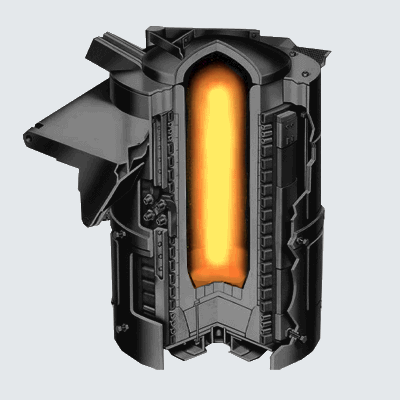Embracing Sustainable Innovation: Induction Furnaces Pave the Way for Greener Metal Production

In an era marked by environmental consciousness and the urgency to combat climate change, industries worldwide are seeking sustainable alternatives to their traditional practices. As the pressure to reduce carbon footprints intensifies, the metal industry has risen to the challenge, with induction furnaces emerging as a shining example of sustainability and efficiency. This article explores the groundbreaking strides induction furnaces have made in promoting eco-friendly metal production, revolutionizing the way we melt and process metals with a focus on environmental stewardship.
- Energy Efficiency: A Green Revolution in Metal Melting
Induction furnaces stand apart from conventional melting methods due to their exceptional energy efficiency. Unlike fossil fuel-based furnaces or electric resistance furnaces that generate heat indirectly, induction furnaces generate heat directly within the metal itself through electromagnetic induction. This direct heating method significantly reduces energy wastage, translating into lower electricity consumption and a reduced carbon footprint.
By harnessing the principles of electromagnetic induction, these furnaces can reach desired melting temperatures quickly, further enhancing their energy-saving capabilities. As the global community strives to reduce greenhouse gas emissions, induction furnaces have emerged as a viable option for environmentally-conscious metal manufacturers.
- Minimal Emissions: A Breath of Fresh Air
The induction furnace’s eco-friendly advantage extends beyond energy efficiency. Unlike traditional melting processes that often release harmful emissions into the atmosphere, induction furnaces produce minimal pollution. Since no direct combustion occurs, these furnaces do not emit greenhouse gases, particulate matter, or harmful fumes. As a result, induction furnaces contribute to cleaner air and healthier work environments for employees.

- Recycled Metal Melting: Closing the Loop on Sustainability
Another compelling aspect of induction furnaces’ sustainability lies in their compatibility with recycled metal inputs. With a growing emphasis on circular economy principles, metal manufacturers are increasingly turning to recycled metals to reduce raw material consumption and waste generation. Induction furnaces prove to be the perfect ally in this endeavor, as they can efficiently melt and process recycled metals without compromising quality or performance.
By embracing recycled metal inputs, industries can drastically decrease their reliance on virgin raw materials and contribute to a more sustainable future.
- Precision and Waste Reduction: Minimizing Environmental Impact
Induction furnaces excel in their ability to precisely control the heating process, ensuring uniform melting and minimal metal wastage. The accuracy of these furnaces significantly reduces the need for rework or the use of excess materials, further decreasing the overall environmental impact of metal production.
- Longevity and Maintenance: A Sustainable Investment
Induction furnaces, built with robust materials like copper coils and refractory linings, are designed for durability and long-term use. With proper maintenance, these furnaces can withstand extensive operation, reducing the need for frequent replacements and avoiding unnecessary waste generation.
Conclusion:
As the world grapples with the challenges of climate change and environmental degradation, embracing sustainability is no longer an option but a necessity. Induction furnaces have emerged as a beacon of hope in the metals industry, demonstrating that sustainable practices can coexist with efficient and cost-effective production.
By harnessing the power of electromagnetic induction, these furnaces showcase their ability to revolutionize metal melting while reducing energy consumption, minimizing emissions, and embracing the use of recycled materials. As industries increasingly prioritize sustainability, induction furnaces stand tall as a symbol of hope, driving us toward a greener and more environmentally responsible future for metal production. Embracing these eco-friendly technologies is not just a choice, but a collective responsibility for safeguarding the planet for generations to come.






